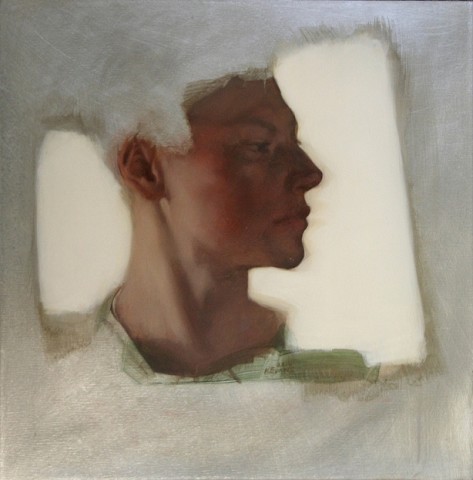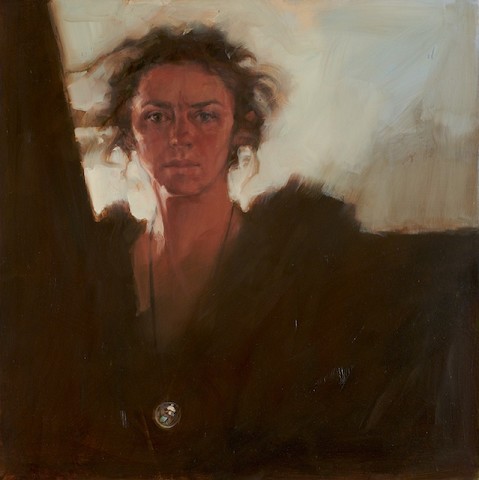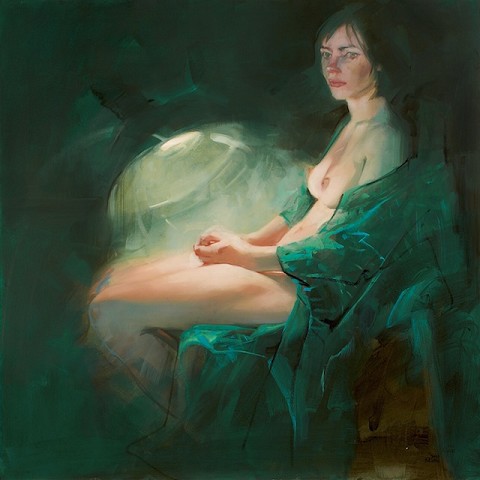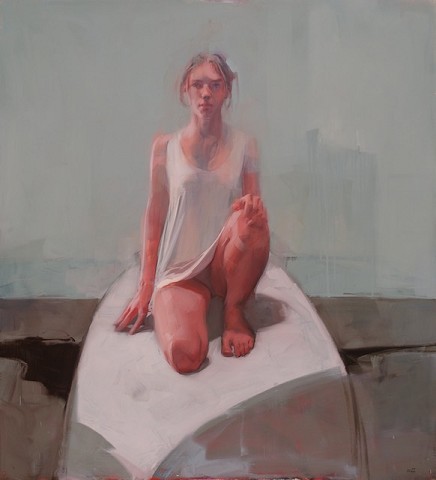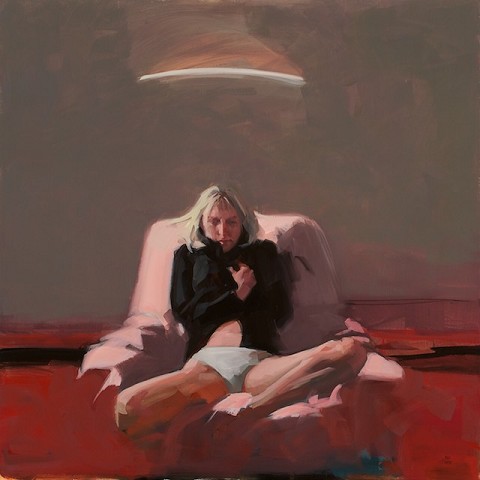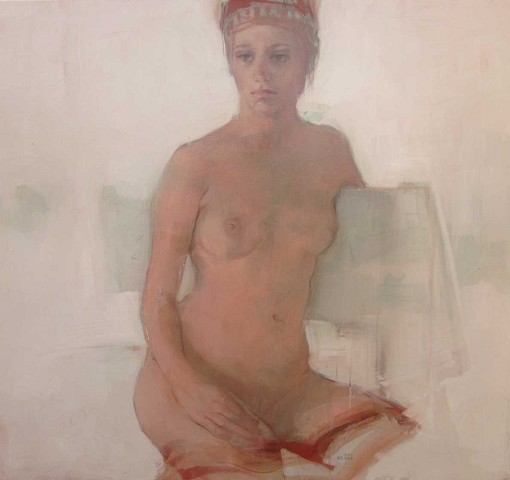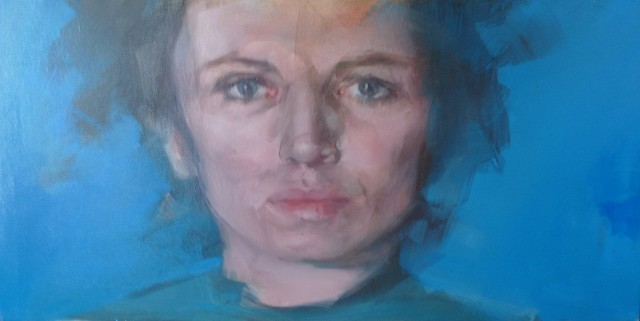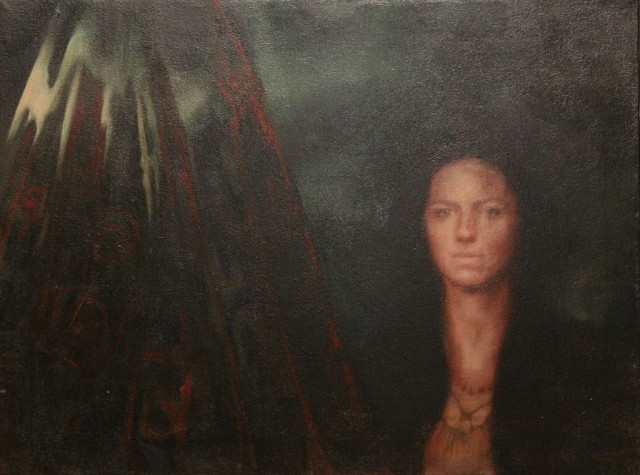Of paint, light and liquidity
Hazel Friedman
In this age of cybernetics, cynicism and simulacra, there exists the misconception that art should say big things about big issues. It is a discourse driven by ‘the idea’ and lubricated by the nutrients of parody, commentary and critique. The paintings of Kerri-Jane Evans move against this flow. And the term ‘flux’ is central to her vision because, like the constant shifts of light and colour that determine
and regulate the cycles of day and night, colour and brushstroke in her paintings ebb and flow, and her forms seem to morph from solid and substantial to plumate and ethereal. It is as though Evans is reluctant to impose too much authority or ownership on the paintings. Which is exactly the point.
I start each painting literally not knowing where or how it will lead,’ she explains. ’The colours emerge from the process as does the composition. And in these works, movement is central because perception is never static.’ She adds: ‘The image should be allowed to constantly change.’
Of course this is art’s ultimate paradox because painterly representation, particularly in its figurative form, entails the act and art of freezing, and of rendering stillness out of movement. Portraiture and figurative painting, in particular, carry their own hierarchy and impose an often unequal
power relation between artist and sitter, subject and object. But even here, Evans’ approach to her models is liquid. In this exhibition, she primarily paints three women, each of whom exudes an irregular, unidealised beauty.
There is Melissa, who lives on the Paarl farm where Evans has resided since her return from India, and who bears a startling resemblance to the artist herself. She is solid, salt of the earth – naked and utterly unadorned. Then there is Fiona who is sleeker, more exotic, whose beauty alternates between feral and the catwalk variety. And there is Taryn — the youngest — whose visage develops, as though ageing slightly in each portrait. Yet the three women also morph into one another, becoming variegated facets of the self.
In their nakedness they are unavoidably erotic. But when a leg is raised it is also to let in the light and when a hand rests between thighs it is as much a gesture of consciousness as it is of arousal.
Evans’ depicts her singular pensive forms against a stark background, usually devoid of contextual references. In this sense her works remind one of the paintings of Stephen Conroy, the Scottish contemporary realist painter. But while Evans’ paintings begin as surface verisimilitude, they
evolve into a layered latticework of dark and light tones, of luminescence and opacity, a body of images that evolve in relation to one other … She never completes one painting before starting another. She works – or rather reworks – on all simultaneously. And each work is inherently, deliberately incomplete. In places her mark is stylised and linear, only to be subverted by her
loose brushstroke and unpredictable palette. For example, in one of the paintings she depicts Fiona in a loosely draped cadmium red robe. The emotive intensity of the red need not provoke a symbolic association but could simply suggest, more viscerally, flesh and blood. And, from the focal point of
her face where the brushstroke is more controlled, it spirals outwards in more random strokes until the edges of the form appear to dissolve.
‘I want the paint – through mark and colour – to speak for itself,’ she says. ‘The medium then has the possibility of developing its own language. Paint is not a separate tool, but rather possesses its own energy.’ Evans likens her painting to the word ‘Yoga’ which has the same root as ‘yoke’. ‘In Indian tradition, Yoga entails yoking oneself to the One. It is simultaneously a form of sacrifice, identification and consecration.’ But, she cautions, it is a neither an intellectual nor
egotistic approach. It is simply about a consciousness of the world all and at once, through lived experience, which is inextricably linked to a wider identification than ourselves.
The Yoga Philosophy, which is directed towards higher spiritual achievements, is peculiar to the Hindus, and no trace of it is found in any other nation. The country of origin of Yoga is undoubtedly India, where Evans lived for eight years, before returning to South Africa in 2009.
But while her aesthetic has evidently been inspired by this philosophy, her loose technique is antithetical to the painterly style of ancient India, with its arduous attention to detail. ‘In the past I have tried to incorporate more detail into my work, but it felt too contrived,’ she reflects. ‘In a
way, I want the paintings to be devoid of inheritance.’
And for Evans the greatest challenge is to accept the paradox of incomplete endings. ‘The image never reaches completion; rather it stops at the point where it is taken away, almost like a small death. ‘She adds: ’Life is constantly moving, intangible and so liquid.’

